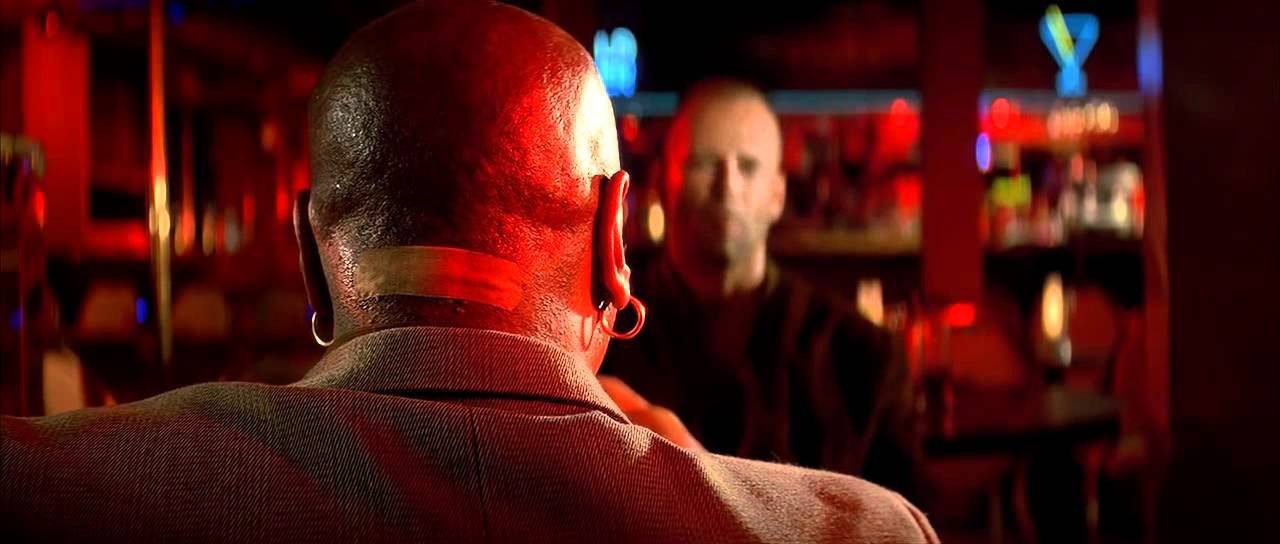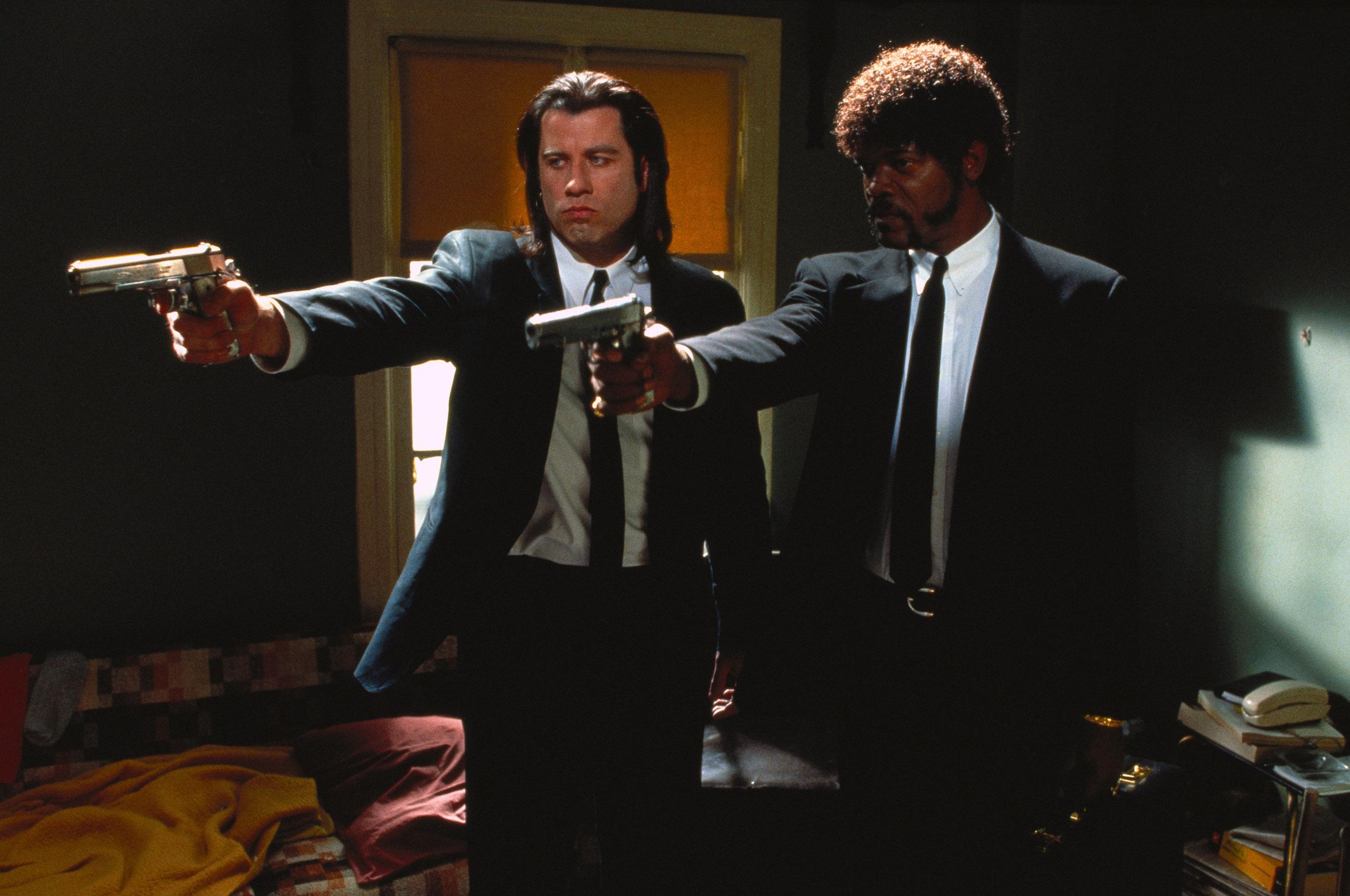“And you know what they call a Quarter Pounder with Cheese in Paris? They call it a “Royale with Cheese.” -Vincent Vega from ‘Pulp Fiction’
As said by Roger Ebert, Quentin Tarantino is the Jerry Lee Lewis of cinema, a pounding performer who doesn’t care if he tears up the piano, as long as everybody is rocking. His movies are mostly characterized by satirical subject matters, a non-linear storyline, extended scenes of dialogues and aestheticization of violence, and Pulp Fiction is the supreme emblem.Through the course of incorporating three seemingly unrelated narratives, the movie pulled together an interwoven story that move like a well-oiled machine. With each of the narratives relying on pieces of the lurid subject matter (pulp) previous to it, which aided in expressing the overall theme. The film manages to pull this off while still giving each of its narrative segments equal weight; as a result they work like interlocking gears, each one necessary to all the others, leaving us with thematic structure and many different kinds of pulp in a humorous amoral setting.

There is something about the way that Tarantino has written the screenplay of the movie, which induces a ‘laugh-out-loud’ scenario, even though the dialogue or the scene doesn’t demand for it. Take the section in the beginning where Jules and Vincent are discussing all manner of irrelevant subjects on their way to the next job: drug laws in Amsterdam, names of burgers in Paris, television pilots. The back-and-forth feel to the dialogue and it’s fast-paced snappiness creates an element of humour in some of the dialogue, even though there are no puns. Of course, the Pulp Fiction does provide some parables; especially during the discussion between Jules and Vincent, about the monumental difference between exploring a girl’s ‘holiest of the holies’ and giving her a simple foot massage. What adds further to the entire essence of the movie is that Tarantino’s skill to induce some aimless long dialogues which manipulate the audience in so many unexpected ways.

Content ahead has spoilers:
The character Vincent Vega is given a number of tasks, which he poorly handles. He is also a kind of person who is reluctant to admit his mistakes (‘The car hit a bump!’), and also has a big ego (‘A Please would be nice’), thus making his interaction with characters like Lance and Mr. Wolf quite hilarious. On the contrary, his partner Jules seems to be more professional at his job, and also has a deeper understanding of the world around him (clearly reflected in the last scene at the restaurant). It is the genius of Tarantino, that he could wonderfully portray the chemistry that exists between these two characters, which is both funny and bizarre.

Tarantino uses excessive violence and bloodshed, to tap the underlying morals of ethics and desire of the audience. Tarantino deliberately violates the conventions of action-films and that contributes to the appeal of the movie. The typical style conventions of the time for action films were building tension and suspense. In the film, Tarantino creates scenes of violence that are exaggerated, surreal, and often comical, such as the scene where Vincent shoots Marvin in his face, or the room scene of Wallace, Zed and Maynard (with ‘Comanche’ playing in the background).

Despite the severe use of overlying “ungodly” elements such as profanity, hyper-realistic violence and use of drugs, Tarantino intelligently slides in layers of themes even the holiest of Church priests could ponder upon. There are several motifs such as the uncertainty of life and death, different paths of life leading to different outcomes, divine intervention and so on. It is also a movie about how people change due to certain events in their lives, allegorical to religious implications, and the plot is woven together so fantastically as to show how the actions of a certain character affects the life of others, even when they aren’t in the same subplot.
Terkla and Reed, in their study of the movie, described Wallace as a cross between “a gangster and a king”, since he is so unlike the romanticised archetypes of gangsters presented in movies like The Godfather, who are rather feudal and anachronistic. He is more like a ruler of a kingdom protected by his hitmen and minions (imagine Butch with the samurai sword evoking the kingdomship in 12th century Japan). Maybe his use of the word “Medieval” wasn’t ephemerically uncalled for.

Pulp Fiction is Tarantino’s love letter to cinema; this movie is a kaleidoscope of cinematic celebration and homages, which, along with its relative obscurity and watershed violence, is a cultural phenomenon even today. It is a milestone of postmodernism due to its low-key representation of consumerism and hedonism (“Royale with cheese”,”the watch”), Media-savviness (with forced punchy dialogues, iconoclastic surfer music soundtrack and pastiche characters) and inexplicably the invocation of an yearning to rewatch.
-Pronoy Das
